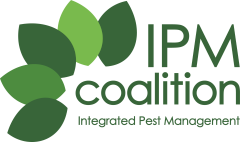Coalition status
FSC restricted HHPs
Chemical pesticide presenting one out of three of the following hazards: acute toxicity, chronic toxicity and environmental toxicity.
Details
Type: Pesticide
Use: Acaricide
Example applications: Apples;Pears;Strawberries;Commercial greenhouses;Ornamentals including roses;Hops
Example pests controlled: All stages of Tetranychus, Panonychus, Oligonychus and Eotetranychus spp. including European red mite, Fruit tree red spider mite and the Two spotted spider mite;Aphids
Mode of action: Mitochondrial complex I electron transport inhibitor, non-systemic with contact and stomach action
Source: PPDB
Toxicty
Identifiers
GHS safety labels
About Globally Harmonized System of Classification and Labelling of Chemicals (GHS)
From Wikipedia: The Globally Harmonized System of Classification and Labelling of Chemicals (GHS) is an internationally agreed-upon standard managed by the United Nations that was set up to replace the assortment of hazardous material classification and labelling schemes previously used around the world. Core elements of the GHS include standardized hazard testing criteria, universal warning pictograms, and harmonized safety data sheets which provide users of dangerous goods with a host of information. The system acts as a complement to the UN Numbered system of regulated hazardous material transport. Implementation is managed through the UN Secretariat. Although adoption has taken time, as of 2017, the system has been enacted to significant extents in most major countries of the world.[1] This includes the European Union, which has implemented the United Nations' GHS into EU law as the CLP Regulation, and United States Occupational Safety and Health Administration standards.
- H301
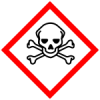
Toxic if swallowed
Class: Acute Toxicity
Subclass: Oral - H317
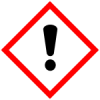
May cause an allergic skin reaction
Class: Sensitization
Subclass: Skin - H332

Harmful if inhaled
Class: Acute Toxicity
Subclass: Inhalation - H373
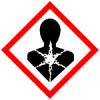
May cause damage to organs (state all organs affected, if known) through prolonged or repeated exposure (state route of exposure if it is conclusively proven that no other routes of exposure cause the hazard)
Class: STOT
Subclass: Repeated exposure - H400
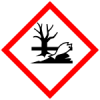
Very toxic to aquatic life
Class: Aquatic
Subclass: Acute - H410

Very toxic to aquatic life with long lasting effects
Class: Aquatic
Subclass: Chronic
